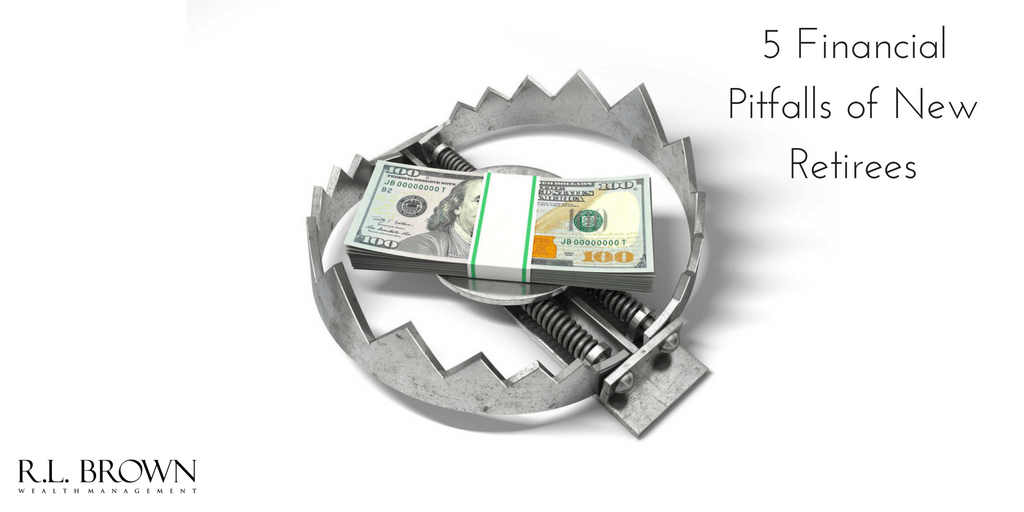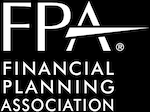Estimated reading time: 8 minutes
When you envision taking distributions from your investment accounts, the most common assumption is that it will involve selling stocks and taking a cash distribution.
Well, there is a little known alternate strategy for taking withdrawals.
These withdrawals are referred to as “in-kind” distributions. Let’s take a look at what these in-kind distributions are, reasons for using them, and how to carry them out.
What is an in-kind withdrawal?
An “in-kind” withdrawal is a distribution made in the form of unsold securities (investments) or other property, rather than in cash.
More simply put, it’s any distribution NOT made in cash.
A distribution in-kind can be made in several different situations, including a stock dividend, inheritance, or taking securities out of a tax-advantaged account.
Can IRA distributions be made in-kind?
Yes, IRA distributions can be made in-kind. For a traditional IRA, this will typically be a distribution of stocks, bonds, mutual funds, or ETFs.
Just like a cash distribution, in-kind distributions from traditional IRAs are fully taxable. The taxable value of the in-kind distribution is determined by the current fair market value of the investment holdings that are being taken in-kind.
Other tax-advantaged retirement accounts that allow for in-kind distributions include:
Beneficiary IRAs (Inherited IRAs)
401(k) accounts
SEP IRAs
SIMPLE IRAs
Roth 401(k) accounts
Roth IRAs
Reasons to consider an in-kind distribution over cash
The reasons for choosing to take an in-kind distribution can vary drastically, but here a few of the most common:
1. Tax savings with NUA (Net Unrealized Appreciation)
There are some cases when taking an in-kind distribution will result in more favorable tax treatment than taking the distribution in cash. One of the most well-known examples of this is Net Unrealized Appreciation (NUA).
What is NUA?
If you hold shares of your employer’s stock in a qualified retirement plan, distributing those in-kind allows you to take advantage of any net unrealized appreciation. Net unrealized appreciation is the gain you’ve accumulated on your company’s stock while it’s been in your retirement account.
For tax purposes, the IRS treats appreciated company stock held in a retirement plan very favorably. Normally, distributions from tax-deferred retirement accounts are taxed as ordinary income. This is NOT the case with appreciated company stock when it distributed in-kind.
When using NUA to withdrawal your company stock ‘in-kind’, your income tax rate only applies to the amount you paid for the stock (your cost-basis).
If you choose to sell the stock once it is outside of your retirement account, those gains will now only be taxed at capital gains tax rates. Capital gains rates are much lower than income tax rates.
Let’s take a look at an example:
Scenario A (No NUA) – You’ve purchased shares of your employer’s stock for $100,000 and they’ve grown to $250,000. If you sell that stock and withdraw the $250,000 in cash, you will owe ordinary income tax on the entire $250,000 distribution.
Scenario B (With NUA) – You’ve purchased shares of your employer’s stock for $100,000 and they’ve grown to $250,0000. You instead, take the original $100,000 of stock purchases in-kind.
In this case, pay ordinary income tax rates on the $100,000 purchase price of the stock, but you get to move the entire $250,000 stock position to a brokerage account. If/when you choose to sell that stock position (now in your brokerage account) in the future, you’ll only pay capital gains taxes on any of the money you’ve gained above your original $100,000 purchase price.
To give you additional context, the maximum ordinary income tax rate in 2020 is 37%, while the maximum capital gains tax is only 20%. That 17% difference could have lead to a $25,500 tax savings, in this case.
2. You want to keep certain stocks
If you like a stock and think it will continue to perform well in the future, you may not want to sell it just yet. An in-kind IRA distribution allows you to keep the stock and still accomplish your financial goals.
When taken in-kind, those stock shares remain intact throughout the distribution and you do not incur the risk of market timing or transaction expenses that comes with receiving cash and having to re-purchase the shares all over again.
It’s convenient. It’s simple. And, you don’t have to worry about the stock price increasing by 20% the day before you plan to buy it back. Ouch!
3. Your IRA is not very ‘liquid’
Real estate, precious metals (gold bars, silver coins, etc), fine art, and classic cars are all examples of illiquid assets that can be held in an IRA. The tax treatment that these assets receive while in the IRA is great, but these assets are not always easy to liquidate.
If you are required to make a distribution from your IRA, it may be more beneficial (and quicker) to withdrawal these types of assets in-kind at market value, versus taking time to find a buyer that is willing to give you the cash you want.
4. RMD withdrawals – When you don’t need the cash
Once you reach age 72, you have to start taking required minimum distributions (RMDs) from your traditional IRA. For reasons previously mentioned, not everyone wants to liquidate investment shares and take cash. The good news is that the IRS does not require you to.
Your RMDs can also be taken in-kind.
If you actually need to spend your RMD to cover living expenses, then you may as well just withdraw the value as cash. However, RMD rules often force many retirees to take excess withdrawals that they don’t need and would prefer to leave in savings.
Taking your RMD in-kind will allow you to roll select investment holdings into a taxable account. That way, you won’t need to worry about selecting new investments or missing out on any market gains.
However, you will still owe ordinary income tax based on the value of the investment that you choose to withdrawal in-kind. You’ll need to come up with some cash to pay the IRS the taxes you owe on the withdrawal.
Here’s a prime example of the benefit of taking RMDs in-kind:
Having to take RMDs in a down market
You find yourself with IRA holdings that are depressed in value, and you need to take a required minimum distribution. You can make the most of the situation by taking the securities in-kind, while you believe their value is at a low point.
You’ll pay ordinary income tax on those securities at that relatively low value.
After you complete the in-kind withdrawal by moving these securities to a taxable brokerage account, any growth beyond today’s relatively low value will only be taxed at the capital gains rates.
Reminder – maximum ordinary income tax rates are 37%, while maximum capital gains tax rates are only 20%.
How to Take An In-Kind Distributions from Your Retirement Account
All of this talk about reasons and benefits is great, but how do you do it? Here are the steps.
- Identify your triggering event.
- Are you over the age of 59 ½, with company stock that you want to keep, and pay lower taxes on? This option also exists if you are not 59 ½ but have separated from your previous employer, and are at least age 55.
- Are you at least age 72 and are now being forced to take RMDs from your retirement accounts?
- Have you inherited a loved one’s IRA and have to take RMDs from it?
- Decide if it truly makes sense. One of these must apply.
- Do you have the money (outside of your retirement account) to pay the taxes generated by in-kind distribution?
- In the case of an RMD, have you done the RMD calculations to determine how much you are required to take; and is this RMD amount greater than the cash you need to live?
- Identify the investment holdings you want to move in-kind
- These should either be stocks that you have a significant gain on, or stocks that you just want to continue to own
- For NUA, this must be company stock currently held in your 401(k)
- Fill out the required paperwork
- You will need to set up a new taxable brokerage account (unless you already have one of these accounts)
- You will need to set up a new Traditional IRA (unless you already have one of these accounts) NOTE: You can alternately do in-kind transfers to a Roth IRA, but this is a little more advanced and could result in major tax surprises if done incorrectly. However, if your company stock is coming from a Roth 401(k) (not common) then the Roth IRA is exactly what you need.
- Complete the rollover, transfer form, and/or phone call required to move your money. Be sure to clearly note the investment holdings that you want to move in-kind. You can either take the entire account value in-kind, or specify which investments you want to distribute in-kind. You can take some in cash and some in-kind as well.
- Pat yourself on the back. You’re a financial wizard.
NOTE: As you go through the steps, though, it’s important to take market fluctuations into account. It takes time to move assets, so if share prices drop during the transfer, you may not meet your RMD. Verify that the final value of the shares you transfer meets your RMD—and take steps to solve the problem if you fall short.
The Bottom Line
Deciding to take an in-kind IRA distribution is all about your personal preferences and financial goals.
As you have seen, in-kind distributions can be beneficial for numerous reasons, but you should also be cautious when going this route due to the fact they involve fluctuating share prices.
If you are trying to satisfy your RMD amount with an in-kind distribution of shares, you always run the risk of coming up short or withdrawing too much.
In the former situation, you’ll have to make a withdrawal from another IRA to meet your requirements.
If you take too large of an in-kind distribution, on the other hand, it could marginally increase the amount of ordinary income tax that you pay on your RMD. As always, consult with your financial advisor if you’re having trouble deciding whether it’s a wise move for you to make.








Can you tell me if I can rollover an in-kind RMD based on Notice 2020-51 and if so, what are the requirements to do so?
If my 2020 RMD was Microsoft stock valued at $100k but it is now worth $75k, do I have to put $100k in cash back into my account?
I don’t see the answer in the Notice so I am heading to the Regs…..
Thanks
Hi Lisa, Great question. The RMD scenario you mention falls under the “Same Property” rule with the IRS. Under this rule, the IRS wants any 60-day IRA rollovers (or RMD reversals due to the CARES Act) to be replaced with the same property and same number of shares. In your case, they want to see the exact same number of Microsoft shares returned to your IRA, even if those shares happen to be trading at a lower value right now. Hopefully, you can rest easy knowing that you don’t have to come up with an extra $25k of cash, just… Read more »
Mr. Brown, I’m 77. In my IRA. I own several annunity cash flows bought on the secondary market. These absolutely commit the insurance companies to make monthly or annual payments to me going into the future. Because my net worth is largely tied up in these plans, I will not have the cash to make increasingly large RMDs. Is there a way I can remove these committed payments from my IRA to non-tax deferred status as withdrawals in kind? I would then have no problem paying the taxes from cash I have on hand. Thank you.
Hi Jay, Based on your description, I am assuming that you own one of the following: 1. An immediate annuity (a lifetime income stream that you traded your IRA lump sum in for) 2. A deferred annuity (your lump sum IRA balance remains, but the insurance company has promised you a designated amount of guaranteed annual income) In the case of an immediate annuity IRA, it is considered by the IRS to “automatically” satisfy the RMD requirements as long as the annuity was set up for lifetime payments (single or joint life) and/or for a fixed term not to exceed… Read more »
Hi Jay,
I am retired. My question: can I use my IRA “loser”stocks as my rmd. And later in my brokerage account sell these at a loss and use these losses to offset gains in brokerage account growth stocks.
Thank you.
I’m 70, and have taken partial withdrawals since age 59 1/2. I’ve received conflicting advice about my eligibility to use NUA because of the partial withdrawals. Your article lists a triggering event at age 72 when I will be forced to take RMDs from my retirement accounts. Could you provide more information about a triggering event at age 72? Thank you.
How about an in-kind transfer out of an IRA to capture and use a long term capital loss? I could use the loss in my brokerage account if I sell there. Reducing the value of my IRA will help reduce RMD amount as well (I am 70).
Can you take an in kind distribution from you Abbott/Abbvie 401 k for rmds and pay the taxes in cash